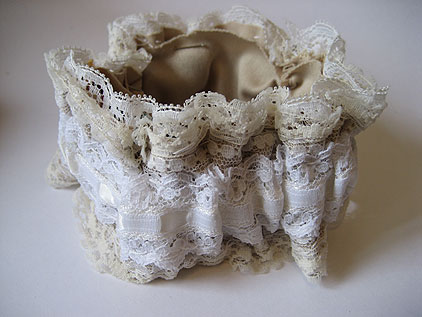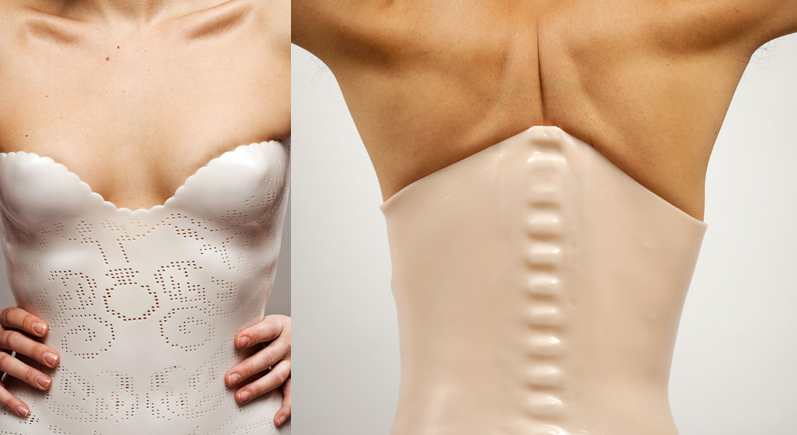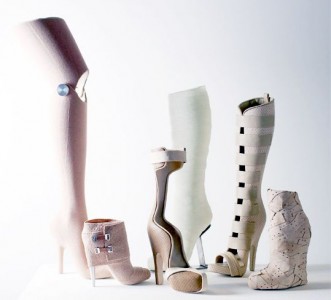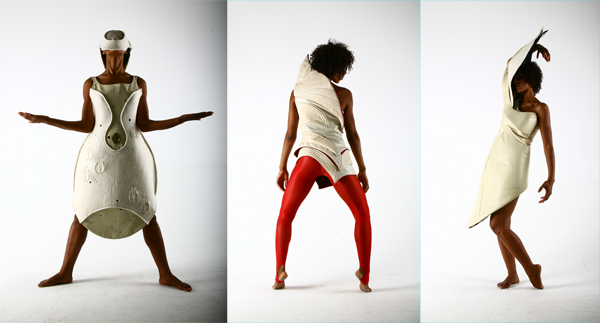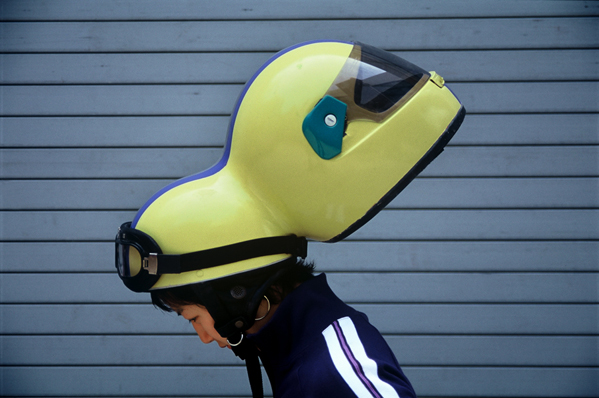 Agneilli Davide, Buzzini Dario, and Drori Tai at the now-closed Interaction Design Institute Ivrea, collaborated on exploratory projects that investigate the three-dimensionality of hertzian space. One of their projects called Fashion Victims, makes visible the space that surrounds us and the radiation that permeates it.
Agneilli Davide, Buzzini Dario, and Drori Tai at the now-closed Interaction Design Institute Ivrea, collaborated on exploratory projects that investigate the three-dimensionality of hertzian space. One of their projects called Fashion Victims, makes visible the space that surrounds us and the radiation that permeates it.
The project is implemented in a collection of garments including soft hats, shirts and bags that detect surrounding cell phone signals. The garments then “bleed” depending on the strength of the signal that results in changing the garment’s color. Each piece is meant to react once until it is completely saturated.
The implementation focuses on the “complex aesthetics” (as they describe) by seamlessly integrating technology into the form and textiles of the garments.
